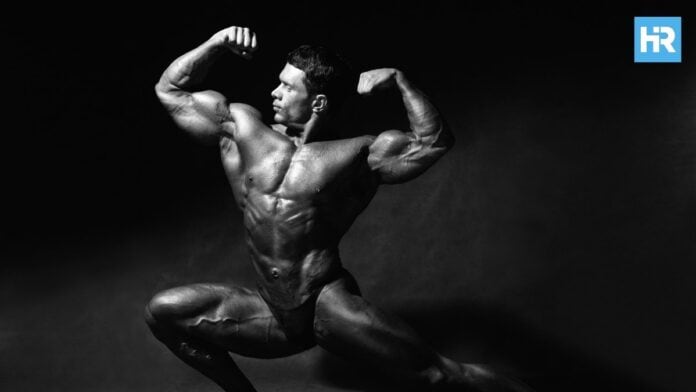Bodybuilding has a fascinating history that goes back thousands of years, long before gyms full of mirrors or Arnold Schwarzenegger became famous.
It’s a story about strength, building muscle, and pushing the human body to its limits.
Let’s explore how bodybuilding began and grew into the sport we know today.
- In ancient times, like in Egypt, Greece, and India, people used heavy stones and tools such as the Indian “Nals” to build strength and endurance. The famous Greek athlete Milo of Crotona became stronger by carrying a growing calf daily.
- Eugen Sandow, born in 1867, is known as the “Father of Modern Bodybuilding.” He focused on creating a fit, balanced body and held the first bodybuilding competition in 1901 at London’s Royal Albert Hall. Today’s Mr. Olympia trophy is based on his image.
- In the 1960s and 1970s, Arnold Schwarzenegger won seven Mr. Olympia titles and became a star in Pumping Iron. He helped make bodybuilding popular worldwide and brought it into movies and everyday fitness culture.
The Origins of Bodybuilding
Before dumbbells, barbells, or protein shakes, people used stones to demonstrate strength and build muscle.
In ancient Egypt and Greece, lifting heavy stones was a way to prove physical power and ability.
Since the Greeks admired the human body and believed in making it strong and balanced, athletes trained with stones of different sizes to strengthen and transform their bodies.
One famous Greek, Milo of Crotona, is said to have carried a young calf daily, lifting it as it grew into a full-grown bull.
This shows how, even back then, people understood the idea of lifting heavier things over time to build strength.
In India, during the 11th century, people had their way of building strength.
They used stone weights called Nals to improve their endurance and stamina.
By the 16th century, weight training was so common in India that it was considered a national pastime.
Gyms were everywhere, and people worked out to stay healthy and handle life’s challenges better.
The Birth of Modern Bodybuilding
In the late 19th century, bodybuilding began to take shape as we know it today, and Eugen Sandow led the change.
Sandow, born in 1867 in Prussia (now Germany), wanted a body like the statues of Greek gods he had seen.
Sure, he wanted to be strong, but he wanted his muscles to look good, too.
Sandow started his career as a strongman and performed amazing feats of strength in Europe.
But he stood out because of how his body looked.
His muscles were so balanced and defined that people admired him for his appearance, not just his strength.
He began posing for audiences, showing off his body as an art form.
In the 1890s, Sandow traveled to America, where he was called the “father of modern bodybuilding.”
He became very popular, creating fitness magazines like Physical Culture, inventing exercise machines, and even writing books about getting strong.
In 1901, he organized the first bodybuilding contest at the Royal Albert Hall in London.
The event had 2,000 people in the audience, and contestants were judged on their overall development, balance, muscle tone, and even skin condition.
The winner, William L. Murray, received a gold statue of Sandow—a tradition that continues today with the Mr. Olympia trophy.
So, there’s no question that Sandow’s impact on bodybuilding was monumental.
He redefined fitness, inspiring countless people to see it as more than a path to greater strength.
Under his influence, fitness became an art form—a way to sculpt the body into something both powerful and aesthetically beautiful, combining health, strength, and symmetry in a way that had never been done before.
Unfortunately, Sandow passed away in 1925, reportedly after trying to pull his car out of a ditch.
Still, his influence on bodybuilding remains, and he is remembered as the father of the sport.
The Golden Age of Bodybuilding
Bodybuilding really took off in the 20th century, especially between the 1930s and 1970s, a time called the “Golden Age” of the sport.
In the 1930s, bodybuilding became more organized, with events like the Mr. America contest starting in 1939.
Participants were judged on how their bodies looked, and the sport started attracting athletes who wanted to look good and be strong.
In the 1940s, legends like John Grimek and Steve Reeves came onto the scene.
Grimek, a two-time Mr. America winner, had an unmatched body in his time.
With his perfect proportions and good looks, Reeves brought bodybuilding into the movies, playing characters like Hercules and inspiring fans everywhere.
At the same time, Muscle Beach in Santa Monica, California, became a famous spot for bodybuilding.
The outdoor gym drew crowds to watch bodybuilders, gymnasts, and athletes perform.
Bodybuilding organizations like the International Federation of Bodybuilders (IFBB), founded in 1946, and the National Amateur Body-Builders’ Association (NABBA), started in 1950, helped grow the sport even more.
They created big contests like Mr. Universe, which gave bodybuilders a chance to compete on a global stage.
The Rise of Arnold Schwarzenegger
When talking about bodybuilding history, you can’t not mention Arnold Schwarzenegger.
Born in Austria, Arnold became the most famous bodybuilder of all time.
In the 1960s, he started competing and quickly dominated the sport, winning Mr. Universe five times and Mr. Olympia seven times.
Arnold was a showman, and there’s no doubt about that.
His charm and confidence helped make bodybuilding more popular with the general public.
The documentary Pumping Iron, which featured Arnold, showed his personality and training and made him a star.
Arnold’s career even went beyond bodybuilding—he became a Hollywood actor, starring in movies like Conan the Barbarian and The Terminator, and later became the Governor of California.
Arnold’s influence on bodybuilding is hard to measure, as he made the sport more exciting and inspired people all over the world to start lifting weights and building their own physiques.
Bodybuilding Today
Today, bodybuilding is a global sport.
Events like Mr. Olympia attract the best competitors from around the world, showcasing bodies that are bigger, leaner, and more muscular than ever before.
Advancements in training, nutrition, and supplements have helped athletes achieve incredible results.
But bodybuilding hasn’t been without controversy.
The use of anabolic steroids and other performance-enhancing drugs has raised concerns about fairness and health risks.
On the other hand, there’s a growing interest in natural bodybuilding, where athletes compete without using drugs.
This has made the sport more appealing to people who care about health and long-term fitness rather than just size.
The Legacy of Bodybuilding
From lifting stones in ancient times to posing on stage today, bodybuilding is a celebration of what the human body can do and how it can look.
People like Eugen Sandow, Steve Reeves, and Arnold Schwarzenegger have made bodybuilding a sport and an art.
They’ve inspired millions to see fitness as a way to improve their appearance and lives.
And if you think about it, when you’re lifting weights to look good, get stronger, or stay healthy, you’re part of a history that goes back thousands of years.
And who knows?
The next bodybuilding legend is probably out there right now, just starting their journey.






